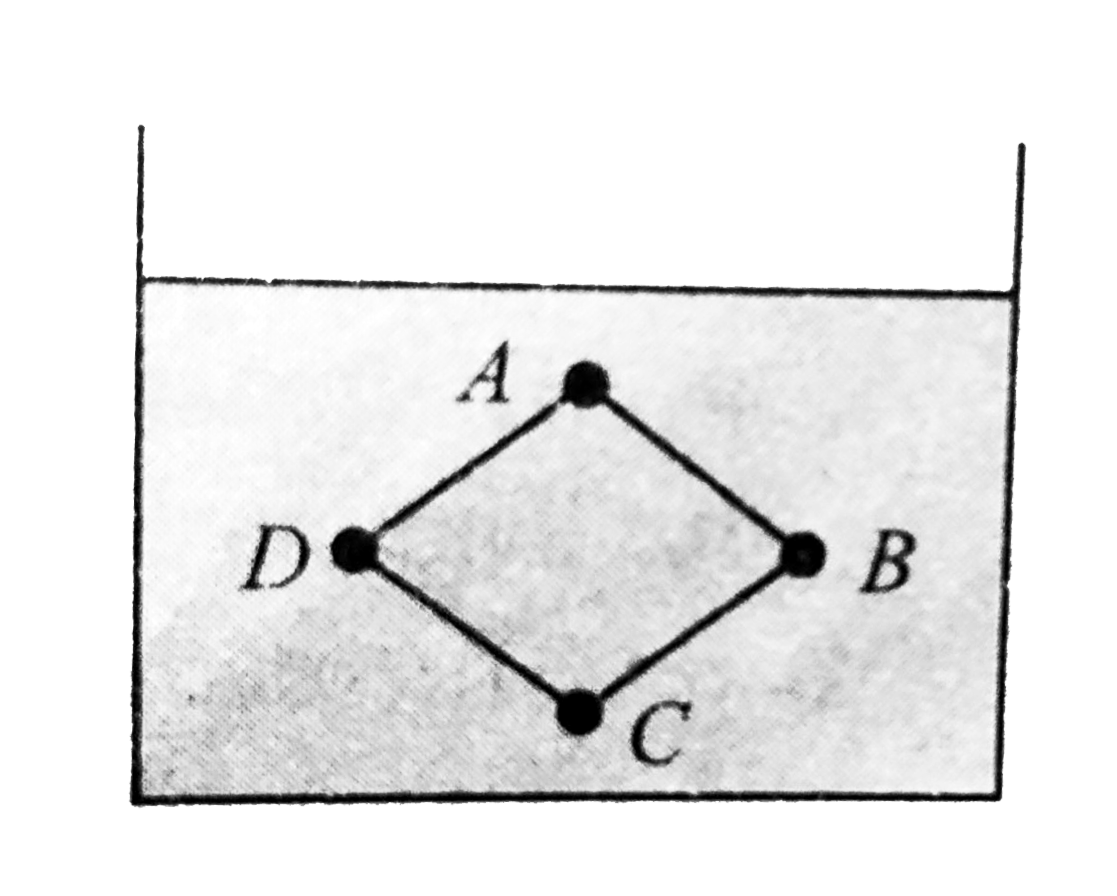Figure shows a container filled with a liquid of density ρ. Four points A,B,C and D lie on the vertices of a vertical square. Points A and C lie on a vertical line and points B and D lies on a horizontal line. Choose the correct statement(s) about the pressure at the four points.

PD=PB
PA<PB=PD<PC
PD=PB=PC−PA2
PD=PB=PC+PA2
The correct Answer is:A, B, D
According to Pascal's law
PD=PB
because B and D lie on the same horizontal plane.
Let l be the side of the square. Then the vertical distance between A and C is l√2.
PB=PD=PC−ρgL√2………i
Similarly PB=PD=PA=ρgL√2...........ii
PB=PD=PA+PC2

Topper's Solved these Questions
- FLUID MECHANICSBOOK - CENGAGE PHYSICS ENGLISHCHAPTER - FLUID MECHANICSEXERCISE - Multipe Correct
15 Videos
- FLUID MECHANICSBOOK - CENGAGE PHYSICS ENGLISHCHAPTER - FLUID MECHANICSEXERCISE - Assertion-Reasoning
8 Videos
- FLUID MECHANICSBOOK - CENGAGE PHYSICS ENGLISHCHAPTER - FLUID MECHANICSEXERCISE - Subjective
25 Videos
- DIMENSIONS & MEASUREMENTBOOK - CENGAGE PHYSICS ENGLISHCHAPTER - DIMENSIONS & MEASUREMENTEXERCISE - Integer
2 Videos
- GRAVITATIONBOOK - CENGAGE PHYSICS ENGLISHCHAPTER - GRAVITATIONEXERCISE - INTEGER_TYPE
1 Videos
Similar Questions
Show that the points A(2,1),B(0,3),C(−2,1)andD(0,−1) are the vertices of a square.
View SolutionShow that the points A(3,5),B(6,0),C(1,−3)andD(−2,2) are the vertices of a square ABCD.
View SolutionShow that the points A (5, 6), B(1,5), C(2, 1) and D(6, 2) are the vertices of a square ABCD.
View SolutionShow that the points A (5,6) B (1,5) and C (2,1) and D (6,2) are the vertices of a square ABCD.
View SolutionFigure here shows the vertical cross-section of a vessel filled with a liquid of density ρ. The normal thrust per unit area on the walls vessel at point. P, as shown, will be

View SolutionShow that the points A(5, 6), B(1, 5), C(2, 1) and D(6, 2) are the vertices of a square.
View SolutionShow that the points A(−1,−4) , B(3,3) , C(3,4) and D(−1,−3) are the vertices of a rhombus.
View SolutionShow that the points A(1,0),B(5,3),C(2,7)andD(−2,4) are the vertices of a rhombus.
View SolutionTake four distinct points, A,B,C and D no three of which are collinear.
Name the line segments.
View SolutionThe points (1,3) and (5,1) are two opposite vertices of a rectangle. The other two vertices lie on the line the y=2x+c. Find c
View Solution
